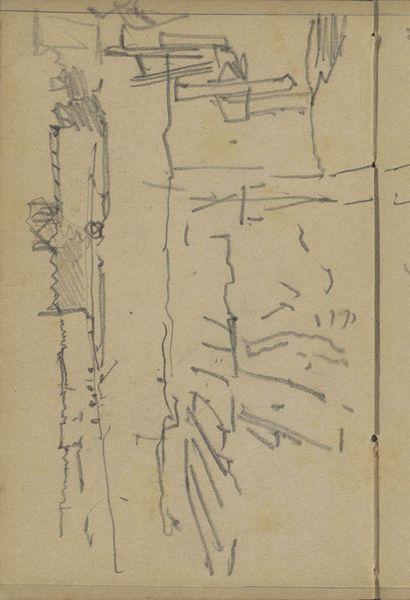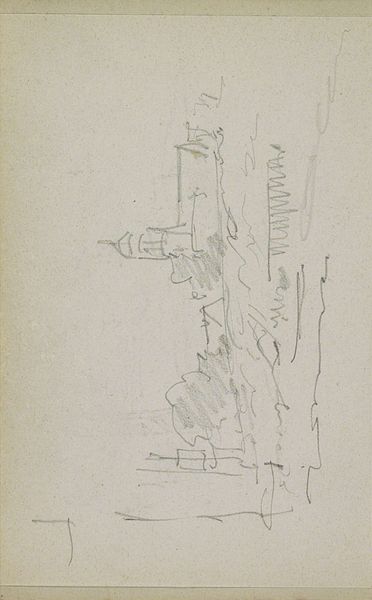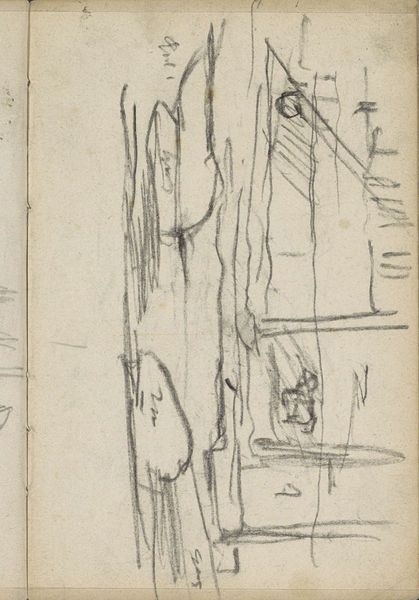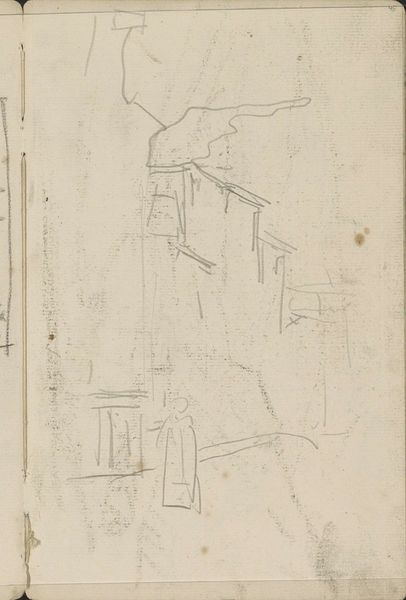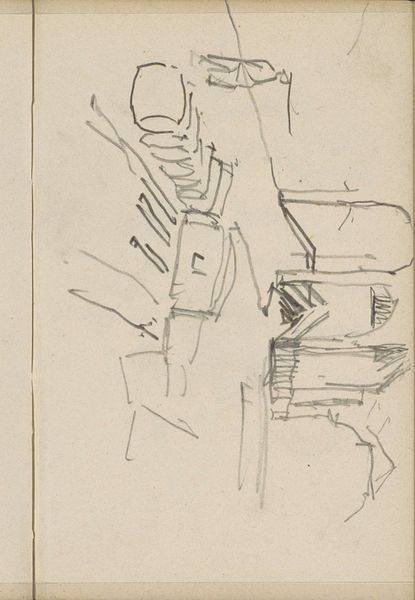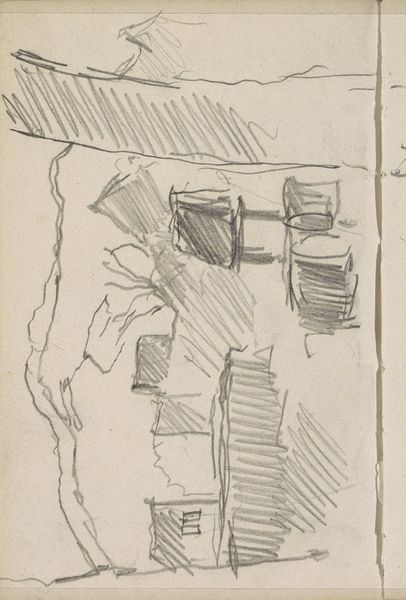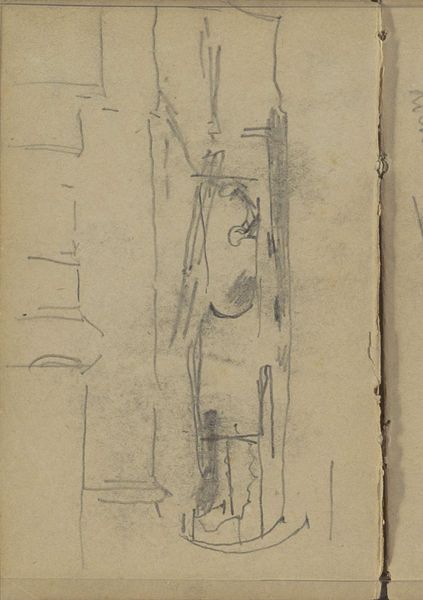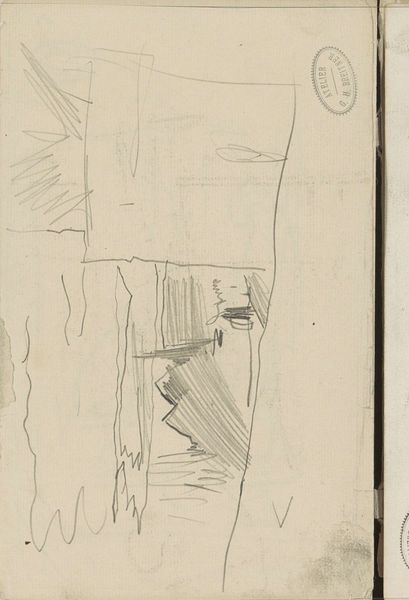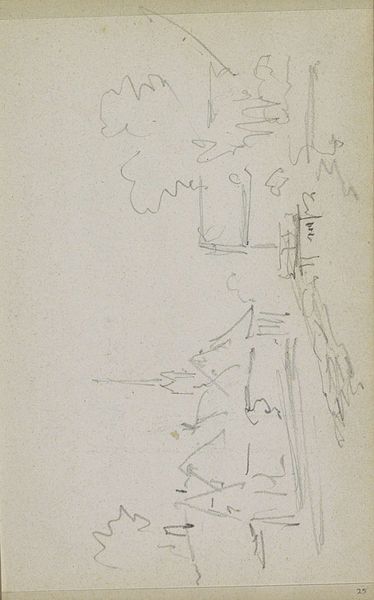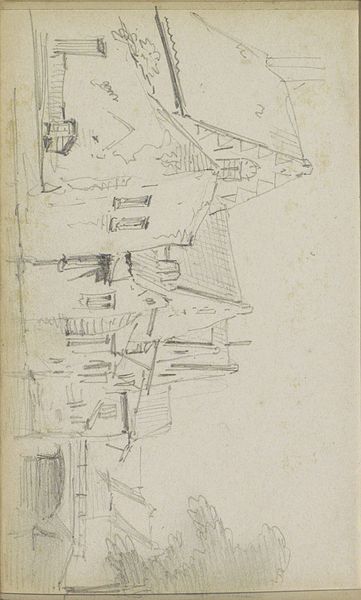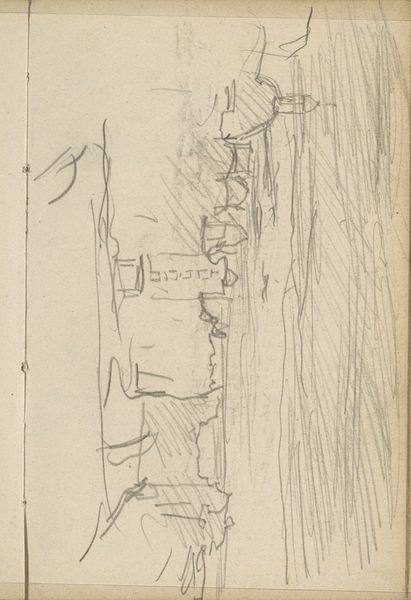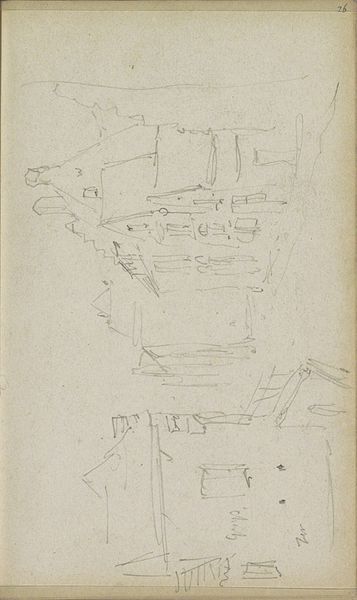
Copyright: Rijks Museum: Open Domain
Curator: Right now, we're looking at "Gezicht op een gracht te Amsterdam," or "View of a Canal in Amsterdam," by George Hendrik Breitner. It's a graphite and pencil drawing done sometime between 1886 and 1923 and is now housed in the Rijksmuseum. What strikes you about it? Editor: Well, initially, it's kind of charmingly scrawly, like a fleeting thought caught on paper. I mean, it's got this definite unfinished quality that pulls you into Breitner’s process. It feels spontaneous. Curator: Absolutely, it captures the ethos of Impressionism meets Realism! The means of production are incredibly bare—paper, graphite. This raw, immediate quality underscores Breitner's dedication to portraying everyday urban life, eschewing polished, academic styles. It is a utilitarian form and practice. Editor: Exactly, you almost see him perched there, capturing the grittiness, the texture of the city, even the smell, as memory. Did he labor with precision or hastily captured a moment? It's raw, almost aggressive in its directness! I get this profound feeling of loneliness and also maybe longing, all channeled through those quick, restless lines. Curator: The drawing provides critical source material relating to a phase in art that valued the everyday and commonplace subjects through cityscapes. Notice how the materiality—the simple pencil strokes—defines form? This becomes less about the aesthetic and more about the experience. It shows a changing society through workaday practices and techniques. Editor: See, I find it beautiful that way because I read this sketch less for exactness, more for its mood— the muted grayness conveying the light on a particular Amsterdam day! There's something intimate in its creation— almost meditative as if he’s both physically there and simultaneously lost within his internal world. Curator: Well said. It's pieces like these that demonstrate art history's vital ties to broader social conditions—Breitner engaging with Amsterdam beyond aesthetic or academic frameworks! Here, the social commentary is inscribed onto the paper via graphite pencil by an artist who sought, actively, to connect art to living in 19th-century Netherlands. Editor: This artwork certainly stays with you—not as a polished artifact but as a record. You see its simplicity as more revolutionary when recognizing it shows us Breitner’s own emotional and mental landscape reflected against Amsterdam's waters. A pretty powerful pairing I'd say. Curator: Precisely. Looking closer at the lines, shading, you truly grasp Breitner’s intention to reflect real people in the urban fabric in a specific moment of material life, that’s well represented within this Amsterdam canal.
Comments
No comments
Be the first to comment and join the conversation on the ultimate creative platform.
